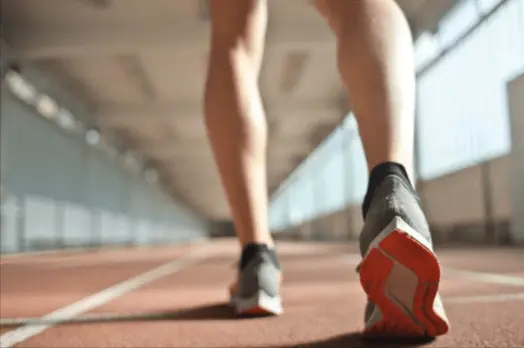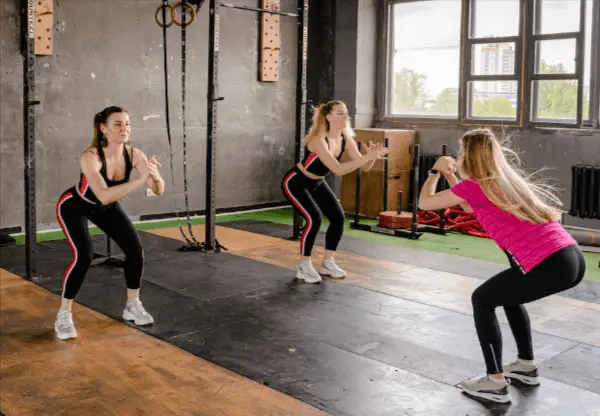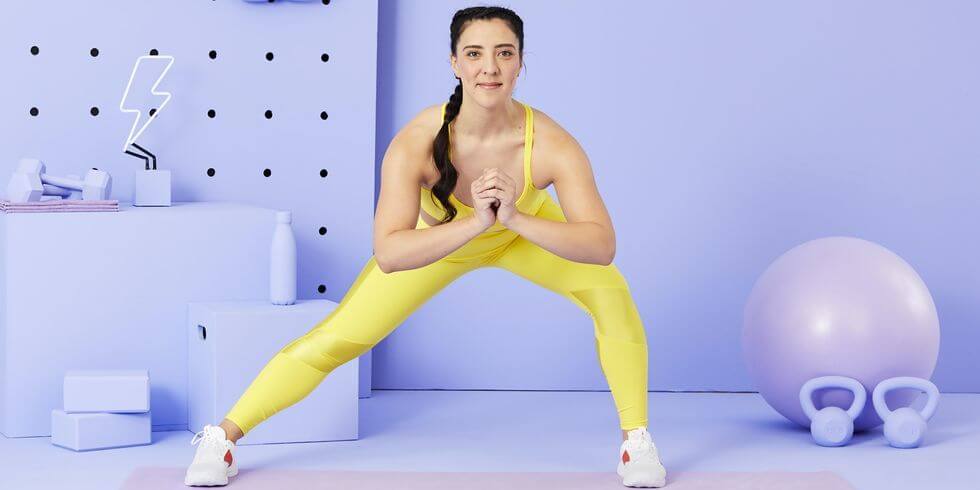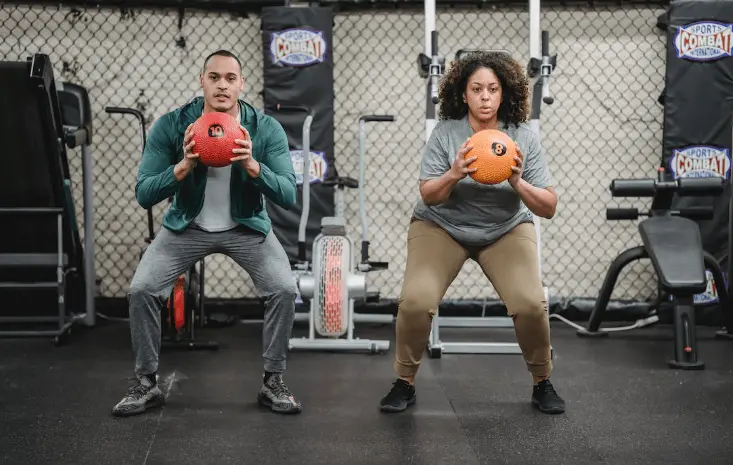If you are hoping to achieve a big bulging chest and arms and that is why you are probably not a regular gym goer, real workout freaks know how important it is to work their quads.
It is obvious if you want somebody to know that you possess great power and strength what better way than having some thick muscular quads? because who doesn’t have bulgy arms these days?
A well-looked-after lower back differentiates you from most. You might be new to the gym or a professional athlete, but your quads are an important muscle group that requires some attention. Similar to the hamstrings these muscles help perform vital functions like walking, running, or getting up from a chair.

Exercising your quads and keeping them strong has been found to reduce pain in patients with osteoarthritis, reduce stress on the knees, and have been shown to improve the stability of your patella ( knee cap ).
Most people who work their quads tend to do it only with the help of squats, but there are multiple other ways that are more beneficial when it comes to training your quads.
Anatomy of the quads and how they function
The quad muscles also known as the quadriceps femoris are a group of muscles in the front of your thighs, they collectively contain more mass than any other muscle group of the body.
These are a group of 4 muscles but recently the fifth one has been discovered. These muscles can easily be injured by any damage taken to the thigh. These muscles bare a lot of strain from the hips and joints.
The 5 quad muscles are
- Rectus femoris which has 2 heads.
- Vastus intermedius helps in extending the knee.
- The recently discovered muscle is the tensor of vastus intermedius.
- The Vastus lateralis is the largest and strongest muscle.
- Vastus medialis is the smallest of the bunch.
These muscles act like shock absorbers when your heels hit the ground, they help in flex the hip, help maintain a correct posture and balance, help stabilize the patella and affect the way you walk.
Let us take you through some exercises that you must pick for a well-curated quad workout routine.
Here are some exercises that you can perform in the comfort of your home.
Squats
One of the most useful exercises that greatly targets the lower body like the quads, hamstrings, calves, and even the core. Depending on how challenging you want to make it for yourself you can increase or decrease the depth of the squat. It becomes the most difficult when your thighs are parallel to the ground.

Instructions
- Stand with your feet wide apart.
- Toes slightly faced outwards.
- To gain more stability clasp your hands in front of your chin.
- Engage your core and push your hips back similar to how you would sit on a chair.
- When you feel the tension in your hamstrings and quads, raise back up or wait until your thighs are parallel to the ground.
Beginners can perform 10 reps and 3 sets and can push up to 20 reps per set.
Lunges
A very simple exercise that engages your quads and hamstrings.
Instructions
- Stand straight with your feet wide apart.
- Clasp your hands in front of you.
- Place one leg forward and lower your body until your leg is in the front and has made a 90-degree angle with your thigh.
- Hold the position and raise yourself back up.
- Do it with the other leg.
Refrain from touching your knee or the back foot the to ground and make sure your back is straight.
Step-ups
It is a great exercise for the stabilization of the hips and the knee joints. They also work on your quads, calves, and core. The higher the platform or the box the more challenging it becomes for you.
Instructions
- Stand in front of a platform or a box that is higher than the level of the ground you are standing on.
- Place one foot on the platform and this is the starting position for the exercise.
- To begin the exercise raise the other foot off the floor and raise it up to the level of your hips.
- Lower the leg back to the floor.
- After you have performed reps on each leg perform the same on the other side.
You can also use a weight to increase the challenge.
Goblet squat
- Stand straight with your feet shoulders width apart and your toes straight.
- Engage your core as you hold a kettlebell close to your chest.
- Push your hips back and as you bend your knees lower yourself into a squat.
- Keep your spine neutral and squat as low as you can.
- Squeeze through your glutes and raise yourself back up.
You can alternatively use a dumbbell if you doubt your grip.
Bulgarian split squat
These stabilize the hip joint and knee joint, working on the quads, hamstring, and core.
Instructions
- Stand straight with your feet at shoulder width.
- Stand with your back facing a chair or a bench.
- Raise your left leg and place it on the edge of the bench.
- Stabilize your body and lower yourself until your thigh has become parallel to the floor.
Lateral lunges
Lateral lunges help in strengthening your quads, hamstring, and glutes.
Instructions
- As you stand with your feet wide apart.
- Place your hands parallel to the floor in front of you.
- Take a step to the side and push your hips to the side getting into a squat position.
- Squat as far as you can.
- Repeat on the other side.

Squat jumps
This is an exceptional exercise for the lower body, It helps strengthen the glutes, quads, and core.
Instructions
- Similar to a squat spread your legs.
- Clasp your hands.
- Lower your body to the ground as far as you can or until your things are parallel to the ground.
- Hold and raise yourself.
- When your feet are completely straight jump.
- Repeat.
Box jumps
Some either great exercises that help build your lower body. Try performing a lower number of reps and sets and it can easily injure your quads and hamstring if they are weak and tight. This exercise also engages the calves, core, and glutes.
You may want to avoid this exercise if you have pain in your knees and you are better off choosing a lower platform to make it easier if you are a beginner.
Instructions
- Stand back a bit facing a platform that is higher.
- Place your feet at the hip’s width.
- Bend your knees until you have assumed the quarter squat position.
- As you swing your arms, extend your hips and jump onto the box.
- Come back by jumping backward and landing with a slight bend in the knees.
- Repeat.
Reverse lunges
These are a variation of the normal lunges, it is easier to perform reverse lunges. It engages your glutes, quads, hamstrings, and core. Make sure your knees do not touch the floor.
Instructions
- Stand straight with your hands clasped in front or holding dumbbells on the sides.
- Take a huge step back. Lowe your body until your thigh has become parallel to the ground.
- Come back to the normal position.
- Repeat on the opposite side.
Leg raises
This exercise targets the quads and improves the crossing hip action. It has been found to engage the core and the hip.
Instructions
- Lay down on the floor with your legs spread straight in front.
- Place your hands on the floor with your palms facing the ground.
- Bend your left foot.
- With the support of your hands raise the right leg and the sole of your feet facing the roof.
- Return and perform on the opposite side.
Make sure you keep your core tight.
Some injuries of the quads
Straining the muscle due to overexertion and not giving it enough rest, tendinosis, tendinitis, and tearing of the muscle.
Who is more prone to quad injuries
- People above the age of 50.
- People with conditions like gout and arthritis.
- People who have had a previous quad injury.
- Corticosteroid medication has been shown to weaken muscles.
- People who perform very little to no exercise for the quads.
Conclusion
Strengthening your quads helps improve the stability in your knees and reduces the risk of injury, especially for athletes. You can perform these exercises at home without using any special equipment or make them more challenging by using simple equipment like a dumbbell, kettlebell, and bench.
Before you perform any exercises remember to warm up for at least 10 to 15 minutes and this can include a walk a run or any exercise that requires you to use your legs, to avoid unnecessary injuries. Avoid over-exerting your quads if you feel any pain in the knees.
So if your goal is to endure less damage and strengthen your quads it is not really going to work unless you put in enough effort and perform exercises that challenge your legs. As you have begun to perform these exercises and realize that you have some discomfort in your knees it is best if you contact your doctor.
